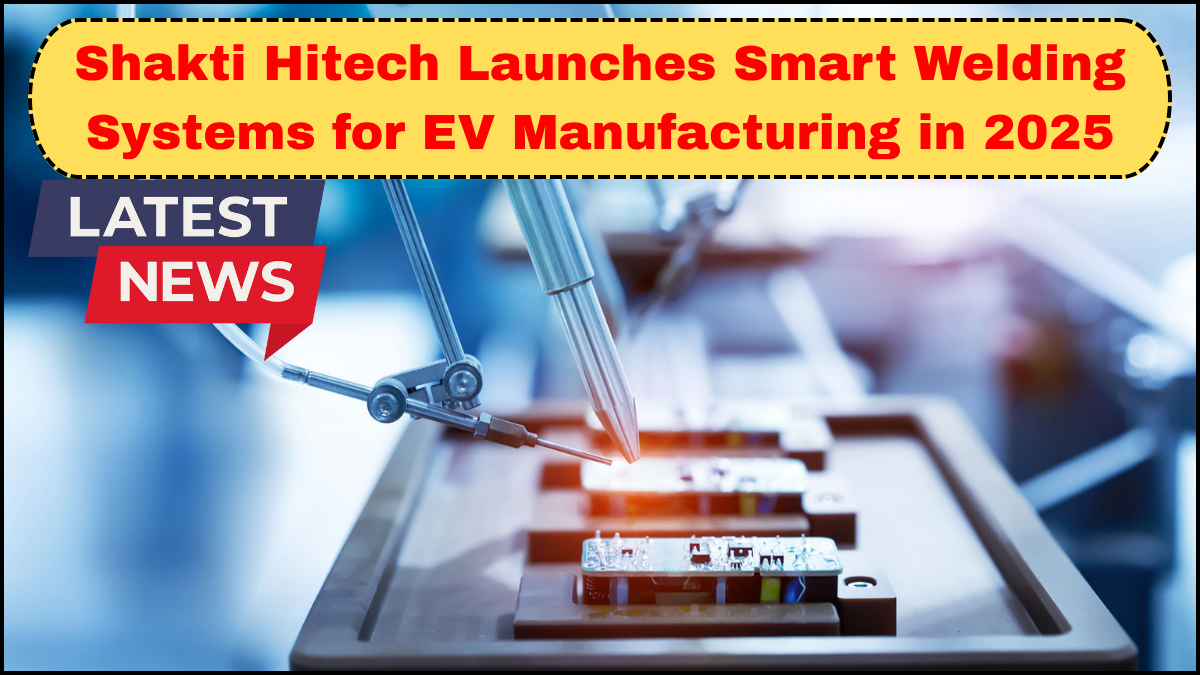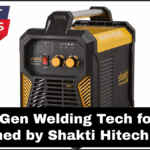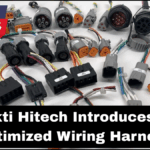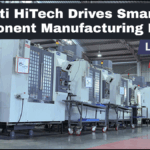In a strategic move aimed at revolutionizing electric vehicle production, Shakti Hitech has officially launched its next-generation smart welding systems for EVs in 2025. Designed specifically for the dynamic needs of EV manufacturing, these systems combine intelligent automation with cutting-edge materials processing to redefine efficiency, precision, and scalability in automotive assembly lines.

The Future of Welding in Electric Vehicle Manufacturing
As the global push toward sustainable transportation accelerates, EV manufacturers face mounting pressure to boost output while maintaining strict quality and safety standards. Traditional welding techniques, though effective for internal combustion engine vehicles, fall short in meeting the material complexities and assembly demands of EVs. That’s where smart welding systems for EVs step in.
Shakti Hitech’s new platform introduces a data-driven, AI-enhanced approach to welding—one that aligns perfectly with the fast-evolving standards of automotive fabrication tech in 2025. These systems integrate machine learning algorithms, real-time analytics, and adaptive controls to handle various materials, including lightweight aluminum, high-strength steel, and advanced composites common in EV chassis and battery enclosures.
Key Features of Shakti Hitech’s Smart Welding Systems
1. AI-Powered Welding Intelligence
Unlike conventional setups, these smart systems utilize AI to continuously learn from each weld. They adapt to slight variations in material thickness, joint configuration, and environmental conditions. This learning capability ensures greater accuracy and significantly reduces the margin of error, resulting in stronger, more consistent welds.
2. Real-Time Quality Monitoring
Each welding unit comes equipped with sensors and visual monitoring tools that assess weld integrity in real-time. By flagging anomalies instantly—such as porosity, weak joints, or overheating—the system enables immediate correction without slowing down production. This proactive defect detection enhances reliability and reduces post-process inspection costs.
3. Seamless Integration with EV Assembly Lines
Designed with modularity in mind, the smart welding systems can be integrated directly into existing robotic assembly infrastructure. This plug-and-play functionality means manufacturers can upgrade their operations without costly overhauls or extended downtime.
4. Enhanced Energy Efficiency
Electric vehicle manufacturing demands sustainability not just in the product but throughout the production process. Shakti Hitech’s systems use intelligent power modulation, which adjusts energy consumption based on weld type and material. This leads to lower operational costs and a smaller carbon footprint.
5. Digital Twin Technology
Leveraging automotive fabrication tech 2025 trends, the platform includes digital twin support—virtual models of physical welds that allow simulation, optimization, and predictive maintenance. Engineers can test configurations virtually before applying them on the production floor, reducing trial-and-error and speeding up design iterations.
The Competitive Edge for EV Manufacturers
With global EV sales projected to surpass 20 million units in 2025, the competition among automakers is fierce. Those who adopt smart welding systems for EVs will gain a decisive edge in terms of production agility, cost control, and product integrity.
Shakti Hitech’s solution addresses key industry challenges—such as battery casing durability, lightweight frame joining, and thermal management—all through automated precision. OEMs and Tier 1 suppliers alike can benefit from these systems’ ability to deliver high-performance results under tight tolerances.
Driving Innovation in Automotive Fabrication Tech
Shakti Hitech is not just responding to industry trends; it’s shaping them. By investing heavily in R&D and collaborating with leading EV manufacturers and universities, the company is helping to set new standards in automotive fabrication tech 2025.
Their roadmap includes expanded machine vision capabilities, AI models trained on diverse welding scenarios, and cloud-based analytics platforms that provide production insights across global facilities. This vision positions Shakti Hitech as a leader in smart manufacturing innovation—not just for EVs, but for the broader shift toward Industry 4.0.
Frequently Asked Questions (FAQ)
What makes Shakti Hitech’s welding systems “smart”?
The systems incorporate AI, machine learning, and sensor-based feedback loops to adapt in real-time, optimize weld quality, and reduce human intervention.
Are these welding systems only for electric vehicle production?
While optimized for EV applications, they are flexible enough to support a wide range of automotive and industrial fabrication needs.
How do these systems enhance sustainability?
They reduce energy consumption through adaptive controls and minimize material waste by detecting and correcting defects early in the welding process.
Can they be integrated into existing production lines?
Yes. The systems are modular and designed to integrate seamlessly into existing robotic and automation frameworks.
What support does Shakti Hitech offer for implementation?
The company provides end-to-end support, including installation, training, customization, and ongoing maintenance backed by remote diagnostics and cloud-based analytics.
click here to learn more



